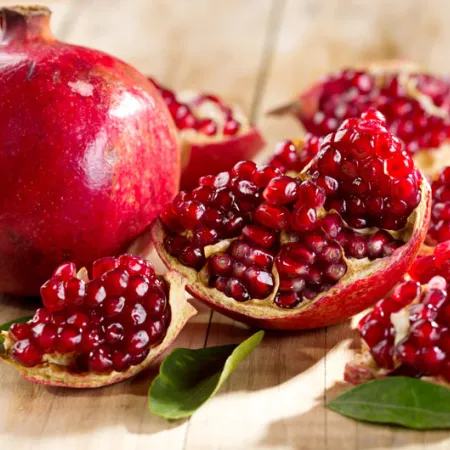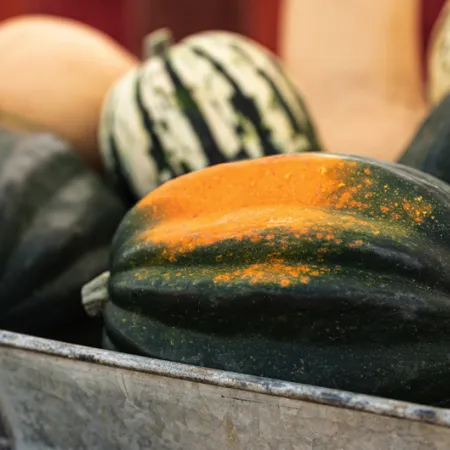Winter squash: A guide to delicata, honeynut, and more

DGC - stock.adobe.com.
When summer ends in September, many of us aren’t thinking about winter squash. We’re saying sayonara to locally grown summer squash, zucchini, and pattypans. The silver lining: Most varieties of so-called “winter squash” get their season started before the first day of fall hits.
This article comes from Nutrition Action. We don’t accept any paid advertising or corporate or government donations. Any products we recommend have been vetted by our staff and are not advertisements by the manufacturers. They’re just healthier foods we think you’d like to know about!
Butternuts, pumpkins, and other winter squashes typically deliver a boatload of beta carotene. It gives them their orange hue...and gives you vitamin A. And that comes along with an impressive load of fiber and potassium!
All winter squashes are full of nutrients, but it doesn’t hurt to play the field. Sometimes your taste buds want to branch out beyond butternuts to something that’s more or less sweet. Or maybe you’re short on time (smaller squashes are simpler to prepare). In either case, try one of these:
- Honeynut squash
- Delicata squash
What makes them so easy? For starters, both varieties are petite enough to feed one or two people per squash, so planning and cooking for small households is a breeze. A smaller squash is also easier to cut safely than a big heavy one…and you don’t need to peel them.
Honeynut squash

Honeynut squashes are a snap to spot: They look like baby butternuts. But the tiny squash packs big flavor—like cranking up the sweetness on a butternut—and its thin skin is perfectly edible after roasting.
If you’re hunting for honeynuts, you’re in luck. When they first hit the squash scene about a decade ago, they were hard to come by. But now you can find them in many Whole Foods Markets, Trader Joe’s, and some other supermarkets.
Shopping tip: A honeynut’s skin starts out green and turns orange/golden as it ripens. So for the ripest squash, try to buy the one with the fewest hints of green in its skin.
To prepare, simply halve the squash lengthwise, remove the seeds, and slice into half-inch-thick half-moons. Then toss with 1 Tbs. olive oil and roast in a single layer on the bottom shelf of a 425°F oven until the squash is tender and the bottoms are browned (about 25 minutes).
If you can’t get your hands on a honeynut, a butternut squash is a great stand-in. The easiest way to shave off its thicker skin: Use a serrated vegetable peeler (the kind with teeth).
Delicata squash

True to its name, a delicata squash has the most delicate (and edible) skin of any winter squash. Its taste? Like a mild, less-sweet butternut. Some people compare it to a mix of butternut and sweet potato.
To prepare a delicata, cut it in half lengthwise and scoop out the seeds. Then brush with olive oil, place cut side down (or slice into inch-thick half-moons and toss with olive oil), and roast in a 450º F oven until soft, about 30 minutes. Serve as a side or toss the half-moons into a salad.
Want a recipe? Try Roasted Delicata Squash or Miso-Glazed Tofu & Squash.
Tips for just about any winter squash

From a hefty kabocha squash to a teensy sweet dumpling squash, we’ve rounded up our tips for buying and preparing all kinds of winter squash:
- Acorn squash is another easy-to-prepare squash that’s perfectly sized for one or two people. And a smallish acorn squash’s thin skin will be pleasantly toothsome when roasted. Try Maple Sesame Winter Squash, Miso Roasted Winter Vegetables, or a Roasted Veggie Grain Bowl.
- Looking for pumpkin? Cans or cartons of purée make it easy. Add some to soups, pasta sauces, or curries. If you’re starting from scratch, pick up a sugar or pie pumpkin. They're smaller and more flavorful than their jack-o'-lantern cousins.
- To cut any winter squash, using a large chef’s knife, slice off the root and stem ends first. Aim to create flat surfaces that can rest securely on the cutting board while you cut the rest.
- A sharp knife is less likely to slip while cutting hard, heavy squashes. Keep the blade sharp with an electric sharpener. Don't have one? Some kitchen or hardware stores will sharpen your (non-serrated) blade for a few bucks.
- Don’t ignore your squash’s seeds. Clean, dry, and roast them just like you would pumpkin seeds (at 325°F for 20 minutes or so).
More winter squash recipes
Bring home a butternut squash? Try one of these recipes:
Tags
Topics
Support CSPI today
As a nonprofit organization that takes no donations from industry or government, CSPI relies on the support of donors to continue our work in securing a safe, nutritious, and transparent food system. Every donation—no matter how small—helps CSPI continue improving food access, removing harmful additives, strengthening food safety, conducting and reviewing research, and reforming food labeling.
Please support CSPI today, and consider contributing monthly. Thank you.
The latest Food Finds
Lentiful review: Need an easy way to eat more lentils?
Healthy Eating

Are pomegranates healthy? Plus, how to remove the seeds
Healthy Eating

Winter squash: A guide to delicata, honeynut, and more
Healthy Eating

What’s the healthiest coffee creamer with no added sugar?
Healthy Eating

Which plant-based yogurts are healthy and higher in protein?
Healthy Eating


